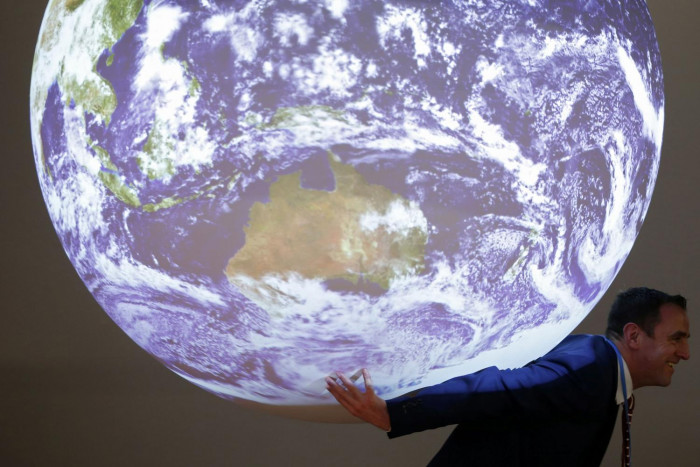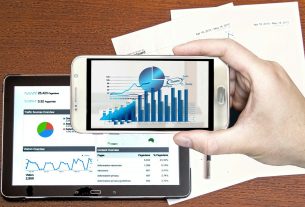We must face, and act upon, an inconvenient truth. The impact of human activities on Earth’s geology and ecosystems is threatening the foundations of life on our planet and decades of progress in human development.
We are acting counter to the goals of the United Nations 2030 Agenda for Sustainable Development — a future that guarantees a decent life for all. Our survival and continued prosperity demand structural change and immediate action. Collapsing fish stocks, melting permafrost, rising antimicrobial resistance, and the loss of tropical rainforests are just a few examples of trends that are undermining the foundation of development.
While large-scale, acute disasters tend to attract the most attention, the ongoing depletion of valuable natural assets (aquifers, air and soil) does not generate headlines but has become a chronic burden for the world’s poorest communities.
These global challenges are also deepening economic inequality between and within countries and exacerbating social exclusion. This not only defies the Sustainable Development Agenda’s principle of leaving no one behind; it also impedes the poverty reduction that comes from inclusive economic growth, undermines the social contract in rich and poor countries alike, and threatens global security.
No country alone can tackle these transboundary problems. Moreover, they are increasingly correlated with other risks, such as massive supply-chain disruptions.
All these issues are born of an economic system that has turned out to be more fragile than many thought. Whereas properly functioning systems are able to manage and absorb risks, our current system is doing the opposite.
The world needs a global system that engenders security, promotes sustainability, and absorbs shocks. To achieve it, the international community could begin by making a handful of practical changes this year, starting at the spring meetings of the IMF and the World Bank.
First, as part of the World Bank’s “evolution” (which shareholders called for in October 2022), we need to modernise its mission by elevating sustainability and resilience as core institutional goals, and by strengthening its analyses and operations to address new transboundary challenges.
We know that for every US$1 (35 baht) invested in sustainability and resilience today, there are $4-7 in savings down the line. But to usher in a new paradigm of resilience and sustainability, we must incorporate these principles into operational, lending, and debt-sustainability models with appropriate incentives and accounting standards. Many reforms and investments can have positive cross-border spillovers. But we will need new and stronger incentives — both analytical and financial — to promote national investment in global public goods, and to support countries with their conservation efforts.
We also need to explore all our options for boosting multilateral development banks’ financing capacity. The key, here, is to leverage existing capital while preserving these institutions’ AAA ratings and countercyclical lending capacity. As the G20 Capital Adequacy Review showed, MDBs can increase their risk appetite and boost financing volumes by lowering their minimum equity ratios. Similarly, we welcome proposals calling for an issuance of non-voting hybrid capital to boost lending at still-lower concessional rates — to be provided either by a shareholder “coalition of the willing” or through sales to private investors.
We also need to explore our options for re-channelling special drawing rights (SDRs, the IMF’s reserve asset) to boost the capital stock of international financial institutions. The IMF’s new Resilience and Sustainability Trust is based on this premise and represents a promising first step toward maximising the effectiveness of SDR allocations. But, given the challenges, the size of the trust is currently too small. We also call on MDBs and development finance institutions to propose additional options — as the African and Inter-American Development Banks have already begun to do. Either way, MDBs must do far more to leverage their balance sheets.
Separately, MDBs must also use their balance sheets to catalyse private investment in the transition to low-carbon energy, transportation, and agriculture throughout the developing world. Without efforts to lower the cost of capital of these investments at a sufficient scale, global warming will hurtle past 1.5° Celsius, triggering cascading effects.
Finally, we urge all lenders and borrowers — including the development banks and private-sector creditors — to include or accept natural-disaster and pandemic clauses in financing instruments. These provisions are present-value neutral, on net, and they offer valuable support to countries by allowing them to ensure sufficient liquidity when they need it most.
The scientific consensus about climate change and biodiversity loss is overwhelming. But we urgently need to turn this understanding into a new economic paradigm at financial institutions. At this year’s spring meetings, the World Bank and its shareholders must recognise the provision of global public goods is essential to the fight against poverty more broadly. In the face of an existential climate crisis, the only path forward is through sustainability and resilience. We must modernise accordingly. ©2023 Project Syndicate



